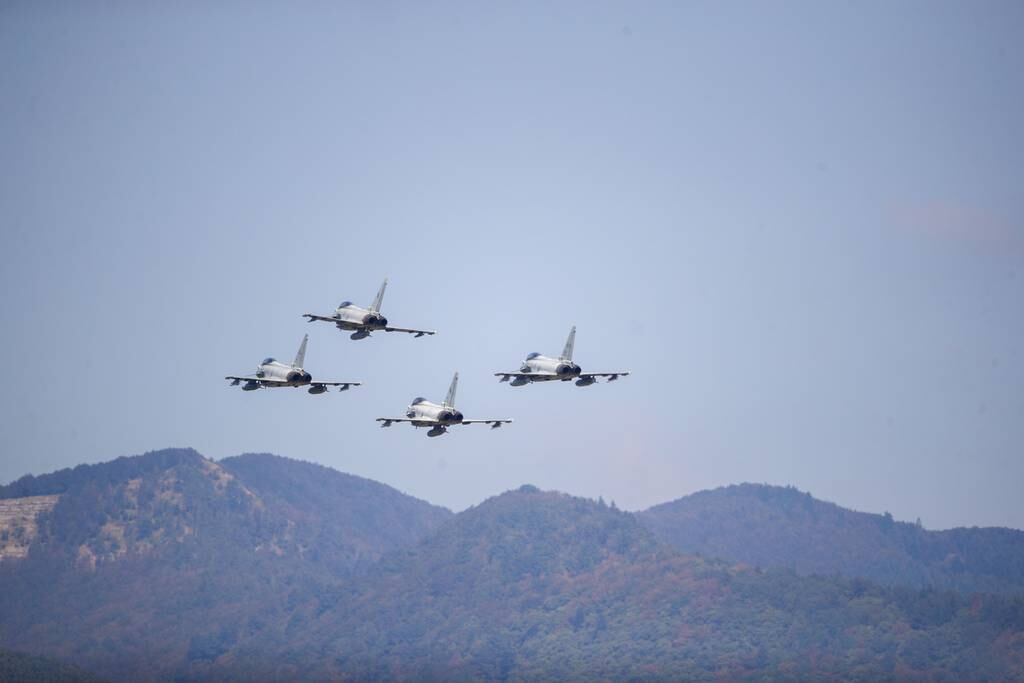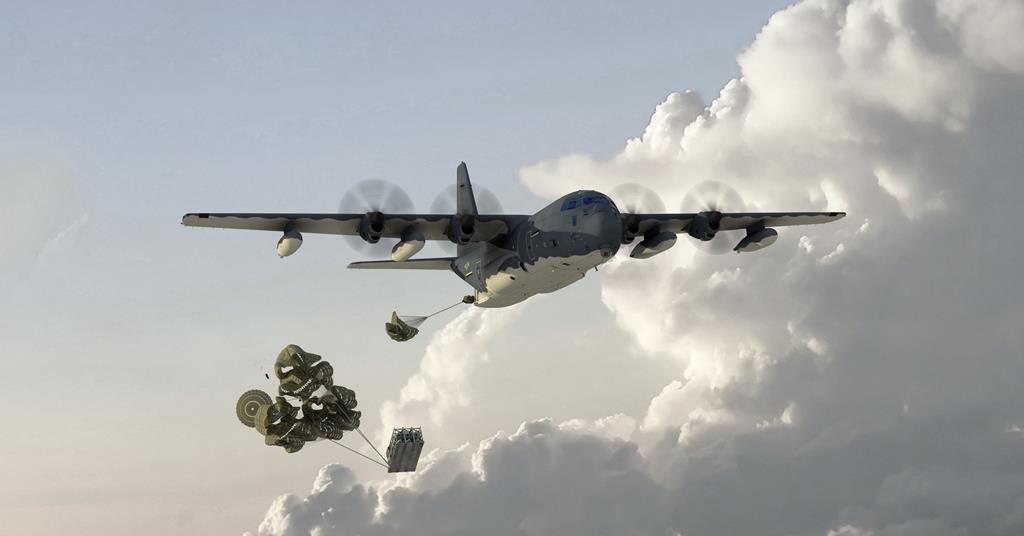Italian Air Force to double pilot training intake with move to Mediterranean island
By
Tom Kington
Dec 3, 2020
Italian air force jets are pictured flying over Tuscany. The service plans to open a new pilot finishing school on the Mediterranean island of Sardinia, a move that would enable more international students to go through the program. (Photo by Bryn Lennon/AFP via Getty Images)
ROME — Italy is close to opening a new pilot finishing school on a Mediterranean island where expanded air space will allow it to double its current intake, with a majority of students coming from overseas militaries.
Now based at Galatina air base in the southern heel of Italy, students in the final, Phase 4 stage at the International Flight Training School will move to Decimomannu air base on the Italian island of Sardinia by 2022 when a new campus is completed.
“We currently have the capacity to graduate 40 students a year from Phase 4 training and we aim to double that to 80 in Sardinia, two thirds of whom will be from other air forces,” said Gen. Luigi Casali, who runs the training operation.
Less than half the students now hail from foreign air forces.
Italy currently gathers its Phase 2, 3 and 4 pilots at Galatina where pilots in Phase 2 and 3 fly the Italian MB339 and Phase 4 students fly 18 T346A air force jet trainers, built by Italy’s Leonardo, as well as another four of the type owned by the firm.
As the Phase 4 pilots move to Sardinia, the earlier stage students will stay on at Galatina to take advantage of the freed up space and start to switch over to new, M345 aircraft, also built by Leonardo, which is partnering the air force in the running of the flight school.
With 18 M345s ordered, the first two are due to arrive this year.
The changes reflect the growth of Italy’s pilot training program as more air forces show up to try out the mix of simulators and new aircraft in use.
Among the current students at Galatina are pilots from Kuwait, Austria, Saudi Arabia, Greece and Singapore. Soon to arrive are students from Qatar following a bilateral deal struck between Italy and the Gulf state in November.
Since the school received the T346A in 2014, 76 students have trained on the aircraft, of which 27 were from other air forces.
As well as student pilots, foreign air force personnel have also trained to be instructors at the base, with newly qualified instructors from Austria, Greece, Argentina and the United States now teaching there.
“We have had two US instructors train here, part of a US interest in seeing how they can make best use of their pending TX training program,” said Gen. Casali, referring to the U.S. Air Force’s trainer-acquisition contract.
So far, 34 instructors have trained in the T346A, of which seven were non-Italian.
The Italian Phase 4 training involves a 50-50 mix of real flight hours and simulator hours in a bid to reduce costs.
Two CAE full mission simulators combine with two Part Task Trainers offering a 220 degree image, while the T346A jets offer in-flight simulation which generates capabilities including radar, armaments and electronic warfare.
Helmet mounted displays are used in both the simulators and the aircraft.
Additionally, the base’s so-called Live, Virtual and Constructive training (LVC) capability allows simulator pilots on the ground to ‘see’ real pilots who are in the air and train alongside them, while allowing those pilots in the air to ‘see’ the simulated aircraft through their on-board simulation programs.
“That allows us to generate ‘red air’ scenarios involving hostile aircraft,” said Gen. Casali.
Phase 4 pilots already undertake some of their flight training at Decimomannu to access the expanded air space, so the permanent move there from Galatina makes sense.
The Sardinian base, which boasts two runways, is currently used by the air force as a stop-off to reach exercises held at nearby ranges which will now also be open to the flight school students.
The first is an Air Combat Maneuvering Instrumentation (ACMI) range where aircraft mount ACMI pods to allow them to be tracked while they hold air-to-air and live-fire, air-to-ground exercises.
“Flying the T346A’s there means live-fire exercises, but also forging closer ties with operational groups to stay updated about new tactics. The closer we are to the operational world, the better it is for the syllabus,” said Gen. Casali.
The T346A’s in-flight simulation program is also able to receive data from ACMI pods on other aircraft and identify their position. “That means the aircraft’s simulated radar can actually ‘see’ those aircraft,” he added.
The second range close to Decimomannu is Salto di Quirra, a testing range which will also be open to the training flights.
When the new campus is up and running, the number of full mission simulators will rise to three from the current two at Galatina, while the number of Part Task Trainers will also rise from two to three.
As more Italian pilots are required to fly Italy’s
newly delivered F-35s, training modules have been drawn up by the flight school for F-35-specific training with help from Italian instructors working with the aircraft at Luke Air Base in the United States.
Gen. Casali said that the first pilot set to go straight from Galatina after Phase 4 training to Luke to train as an F-35 pilot has recently been selected.





